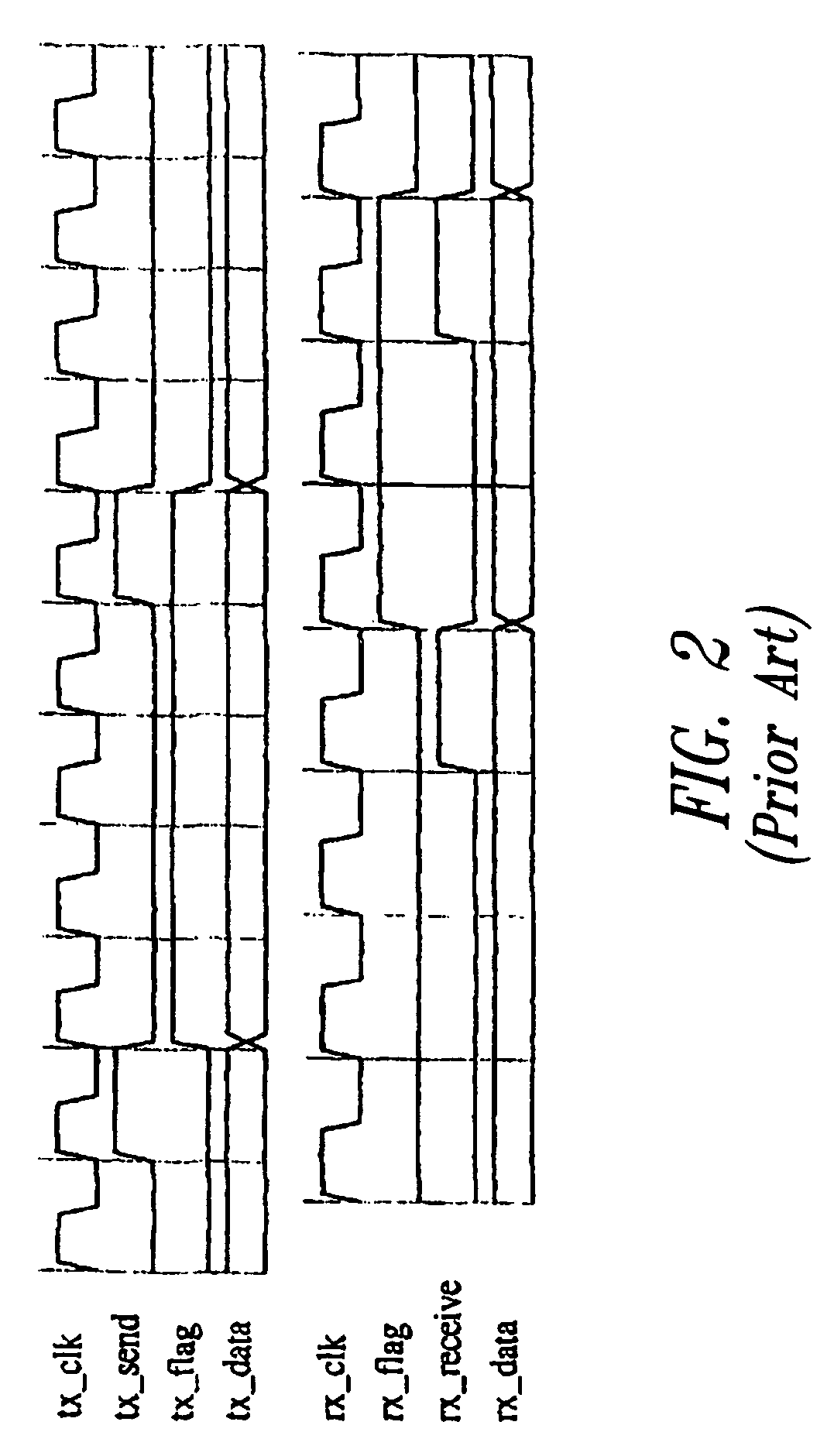Device for transferring data via write or read pointers between two asynchronous subsystems having a buffer memory and plurality of shadow registers
a technology of write or read pointers and shadow registers, which is applied in the field of electronic circuits, can solve the problems of data loss, data loss, and the inability to increase the data transmission speed, and achieve the effect of no
- Summary
- Abstract
- Description
- Claims
- Application Information
AI Technical Summary
Benefits of technology
Problems solved by technology
Method used
Image
Examples
Embodiment Construction
[0026]FIG. 5 illustrates a preferred embodiment of the invention. A buffer 390 is arranged to allow transmission between two asynchronous subsystems. Memory 390 is typically a FIFO-type (First In First Out) memory 390 or any operationally equivalent element such as for example a register bank, etc., located on the data path separating two asynchronous subsystems 300 and 350 clock-actuated by two separate clocks clka and clkb. Preferably, FIFO memory will be carried out by means of a dual port memory having a write port and a read port each operating with a separate clock (clka and clkb).
[0027]Moreover, in both subsystems 300 and 350, first and second pointer registers 301 and 351 are found that contain the write pointer and read pointer of the next memory cell, respectively.
[0028]In order to avoid any data transfer error, the device is designed to prevent receive sub-assembly 350 from reading data before transmit sub-assembly 300 (property PR1). Conversely, transmit sub-assembly 300 sh
PUM
 Login to view more
Login to view more Abstract
Description
Claims
Application Information
 Login to view more
Login to view more - R&D Engineer
- R&D Manager
- IP Professional
- Industry Leading Data Capabilities
- Powerful AI technology
- Patent DNA Extraction
Browse by: Latest US Patents, China's latest patents, Technical Efficacy Thesaurus, Application Domain, Technology Topic.
© 2024 PatSnap. All rights reserved.Legal|Privacy policy|Modern Slavery Act Transparency Statement|Sitemap



